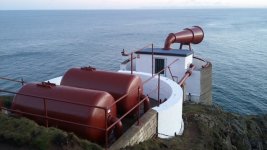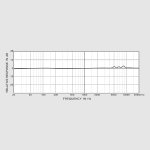Hi there,
Just a quick question, does low frequencies travel further and do they tend to travel through the roof or wall better?
Any advice will be greatly appreciated
-------------------------------------------------------------------------------------------------
 Three threads merged DEC 21
Three threads merged DEC 21
Just a quick question, does low frequencies travel further and do they tend to travel through the roof or wall better?
Any advice will be greatly appreciated
-------------------------------------------------------------------------------------------------
 Three threads merged DEC 21
Three threads merged DEC 21
Last edited by a moderator:
As a sound waves travel through air, they lose energy and consequently can only travel a limited distance.
Low frequency waves can travel further than high frequency waves because there is less energy transferred to the air.
Hence the use of low frequencies for fog horns.
Low frequency waves can travel further than high frequency waves because there is less energy transferred to the air.
Hence the use of low frequencies for fog horns.
Only if it's a wireless (radio) mic inside the cage.
Faraday cage is for radio frequencies, not audio.
Faraday cage is for radio frequencies, not audio.
Frequency amplifier,
Hey,
What kind of low frequency amplifier, can cause sound to travel far?
Any advice you could offer? Or what type of speaker could do this?
Hey,
What kind of low frequency amplifier, can cause sound to travel far?
Any advice you could offer? Or what type of speaker could do this?
Likewise, LF sound waves pass more easily through a wall than HF as they lose less energy on the way through the wall.
Another factor to consider is diffraction. Because of their longer wavelengths, LF sound waves bend more easily round corners and through openings than HF sound waves. That's a major reason why you can hear the bass frequencies more clearly than the treble frequencies when in an adjoining room or outside the house.
Another factor to consider is diffraction. Because of their longer wavelengths, LF sound waves bend more easily round corners and through openings than HF sound waves. That's a major reason why you can hear the bass frequencies more clearly than the treble frequencies when in an adjoining room or outside the house.
Last edited:
 Please do not start multiple threads on the same subject. This is explained in the RULES section. You are supposed to read the rules before posting here.
Please do not start multiple threads on the same subject. This is explained in the RULES section. You are supposed to read the rules before posting here.Understood - Sorry.
By any chance could someone please recommend a Microphone – Sound Sensor? To best captive room acoustics on very low frequencies?
By any chance could someone please recommend a Microphone – Sound Sensor? To best captive room acoustics on very low frequencies?
😵 While that is the best amplifier, I have ever seen and wished my wanted one. I just recently posted to another self made form about trying to captive the low frequency with an Microphone – Sound Sensor but needed recommendations. I can't ask on here tho - double posting and such.
It is not clear from your question what it is you are trying to learn or build so please supply more information.
Do you really want your low frequencies to travel far, or do you just want them to be loud?
Do you really want your low frequencies to travel far, or do you just want them to be loud?
I'm not an expert on room analysis, but the Behringer ECM8000 is often recommended as it is flat down to 15Hz.
ECM8000 | Condenser | Microphones | Behringer | Categories | Music Tribe - Behringer)
ECM8000 | Condenser | Microphones | Behringer | Categories | Music Tribe - Behringer)
Attachments
Galu, that looks like the factory sales bumf. Not one of the 3 calibrated ECM8000 are close to that. One has to be take everything above 10k and below say 40 Hz with a grain of salt.
dave
dave
Thanks Dave!
Oh well I tried! I should have asked Audiobuff88 his budget.
Perhaps the best that can be said is that the mic's performance is reasonable given its low (£30) price.
I guess we need to move into the £500 to £1,000 price range to really hit the lows.
There are some better specified candidates in this Thomann measurement microphone list - any favourites within?
Measurement Microphones – Thomann UK
Oh well I tried! I should have asked Audiobuff88 his budget.
Perhaps the best that can be said is that the mic's performance is reasonable given its low (£30) price.
I guess we need to move into the £500 to £1,000 price range to really hit the lows.
There are some better specified candidates in this Thomann measurement microphone list - any favourites within?
Measurement Microphones – Thomann UK
Perhaps the best that can be said is that the mic's performance is reasonable given its low (£30) price.
It is a good mic for the price, but you really do need to get it calibrated. £30 is more like a used price. A new calibrated one is something like $130 USD.
dave
I realise your question is directed at Dave, but I read that variations in room response of +/-10db below 300Hz are possible.
No, it was a general question, just wondered how accurate they can be in and below the modal region.
Help me SJ - I am interested in what you mean by "Can you measure very low frequencies in a room accurately?".
Do you simply mean that, because of the undulations in the modal region and the falling sound level below the lowest mode, there is little point in the microphone having a smooth and extended bass response, or am I missing something deeper and more technical?
Do you simply mean that, because of the undulations in the modal region and the falling sound level below the lowest mode, there is little point in the microphone having a smooth and extended bass response, or am I missing something deeper and more technical?
- Home
- General Interest
- Room Acoustics & Mods
- Low frequencies

